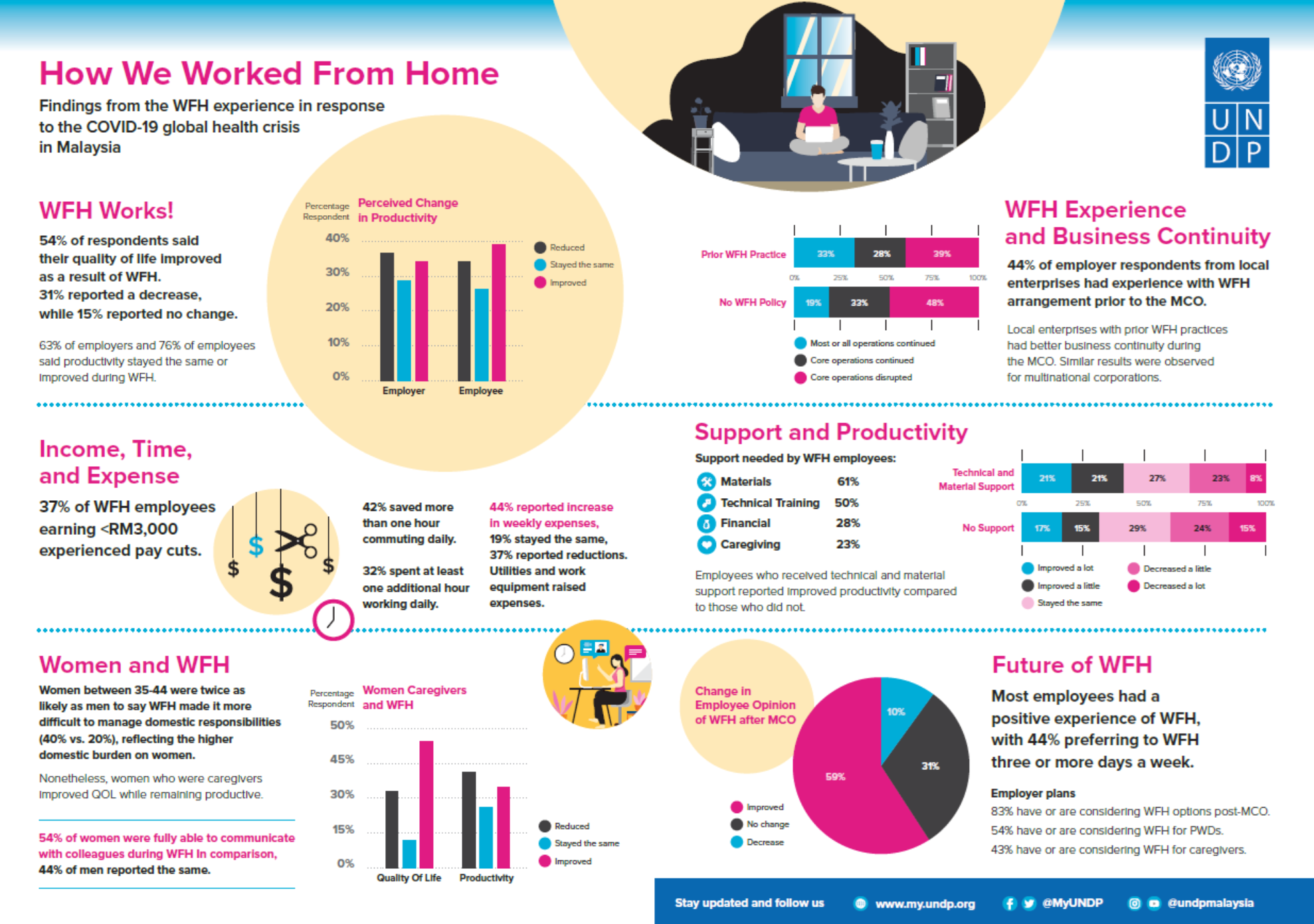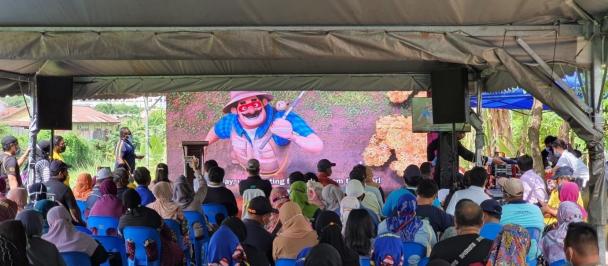When COVID-19 hit, we found ourselves pivoting toward crisis response while also transitioning to “Work From Home” (WFH). Faced with disruptions to work plans and work habits, we had to quickly adopt teleconferencing platforms and online tools to maintain lines of communication and build new streams of work with colleagues and external partners. And, so did the rest of the world.
Disruption is painful, even devastating. COVID-19 has claimed hundreds of thousands of lives and created socioeconomic shocks that have left no one untouched. Disruption also creates openness to change. The pandemic has forced many of us to make WFH work and shown us that it is possible. We wanted to know whether it is also desirable and sustainable.
COVID-19 has not made the world a better place, but it has created conditions that accelerate change. It is up to us whether these changes lead to a more just and sustainable world or whether they exacerbate and entrench inequalities. This choice is at the heart of Building Back Better. The Accelerator Lab ran a WFH survey and scanned social media in Malaysia to gather evidence about WFH experiences during the Movement Control Order (MCO). We reached over a thousand employees—about a quarter of whom earn less than RM 3,000 per month—and over two hundred private sector employers, mostly local small and medium enterprises.
What did we learn?
We learnt that most employees liked WFH and would like to do so regularly. 42% of respondents saved at least one hour a day by cutting their commute. This enabled them to manage work and domestic responsibilities better, improving their quality of life (QOL). 59% of respondents had a better opinion of WFH after this experience—with older employees having the greatest positive shift.
We learnt that low-income employees, gig workers, and the self-employed were especially vulnerable to income loss even while working from home. Those who experienced income loss also more likely to see their expenses increase because they had to absorb the costs of work. Low- and middle-income employees with children had the least capacity to reduce expenses in the face of an uncertain economic climate.
We learnt that WFH can work for mothers. There have been many media and social media reports of the challenges working mothers faced during WFH. Indeed, we saw the gender imbalance in domestic responsibilities reflected in the survey results, with women between the ages of 35-44 twice as likely as men to find domestic responsibilities more difficult during WFH (40% vs. 20%). However, these gender imbalances exist with or without WFH. Women with childcare responsibilities were the most likely to report large improvements in QOL during WFH (31% vs. 27% for the sample population), and 59% reported that their productivity stayed the same or improved.
We learnt that WFH can work for employers. Employers who had prior WFH experience had much higher rates of business continuity during the MCO period. Those who provided both material and technical support to their employees reaped employee productivity benefits. However, some employers did not provide clear guidelines on working hours or instituted intrusive employee monitoring practices, with negative consequences for employee QOL.
Where Do We Go From Here?
In our survey, 83% of employers said that they have or plan to adopt WFH practice in the new normal. However, there is an inclusivity gap. Among those intending to begin WFH policies, only 38% planned to have WFH options for caregivers and 30% planned to have WFH options for persons with disabilities. On the employee side, women were less likely than men to think their employers would be open to WFH, possibly due to worries that they would be perceived as being less productive or committed to their jobs. The MCO was an especially difficult time to WFH—with school and childcare closures and major disruptions to business operations. If we could make WFH work then, we can make it work for caregivers and PWDs now.
As adoption of WFH practices grows, we need to ensure that the changes do not hurt the most vulnerable. We saw transfer of costs of work to employees—especially lower-income workers—during the MCO. The chaos of the unexpected shift to WFH may make that understandable, though not acceptable; there is no excuse for employees continuing to bear the costs of work going forward. In the long term, proliferation of WFH practices may blur the lines between permanent and gig work; we need to revisit our social protection policies to better cover gig workers, the self-employed, and those in the informal sector.
Large-scale adoption of WFH can have positive impacts on a range of sustainable development issues. Commuting costs RM 10-20 billion in time, fuel, and carbon emissions in the Greater Kuala Lumpur area alone; WFH can go a long way in reducing time, monetary, and climate costs. WFH also has the potential to decouple housing and work. This may help to address the rising costs of housing and the depopulation of small towns due to rural-urban migration—which may also make it easier for children to stay with or near their elderly parents—an important issue as Malaysia becomes an aging society. To reap these benefits, WFH must be viewed as more than just a human resource issue. Investments in digital infrastructure and literacy will be necessary to unlock gains and ensure that no one is left behind.
The Malaysian government has taken initial steps to leverage lessons learned from the MCO WFH experience, working with telcos to provide free data for students and workers and providing incentives to employers for Flexible Work Arrangements. We laud these steps and offer our recommendations in support of next steps toward a more sustainable, inclusive, and resilient Malaysia.
We are pleased to share our full report as Malaysia and the world Builds Back Better—or perhaps Builds Forward Better—from COVID-19. We hope for a Future of Work—at home or on-site—that works for all.
Infographic: Key Findings, How We Worked From Home. Click to enlarge image. Photo: UNDP Malaysia
Please refer to the following links to download:

 Locations
Locations






